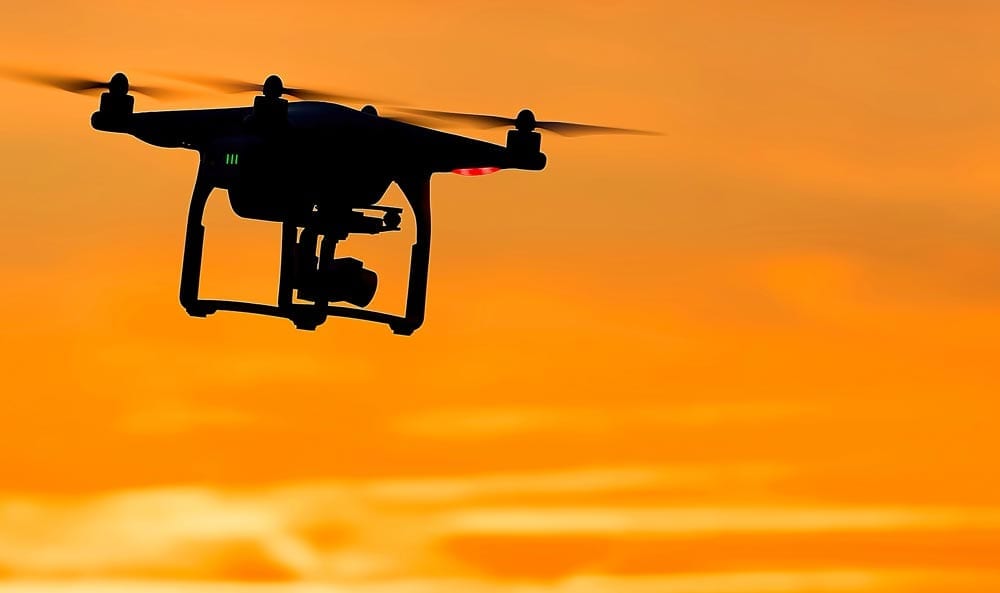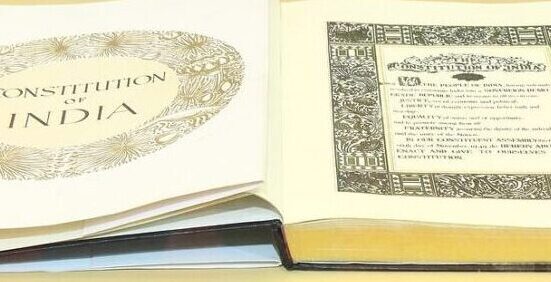This article, “Unmanned aerial vehicle: Privacy and Safety Concerns” is written by Vijetha Saishree Palle a 1st year Law student at Symbiosis Law School, NOIDA
INTRODUCTION
Unmanned aerial vehicles, or UAVs, have demonstrated their effectiveness in Afghan, Iraqi, and Lebanese battlegrounds. In military operations, unmanned aerial vehicles provide a relatively inexpensive, safe replacement for human aircraft. The same benefits have prompted many people to believe that UAVs have natural applications and are more useful in a household context. While these unmanned aerial vehicles offer numerous benefits and innovative applications, they also raise significant concerns surrounding tort liability. As drones become more prevalent in our daily lives, exploring the legal implications and potential liabilities they may entail becomes crucial.
Advances in communications, control, and optical technology have created the demand to develop UAV systems and have undoubtedly been amplified in recent decades for various home purposes and to increase the productivity of law agencies.[1] Unmanned aerial vehicles have no doubt benefitted the community but have also presented a few threats to society. Law enforcement will face new challenges in the coming years. Authorities will use UAVs to patrol borders, manage crowds, track people, and other purposes. Nevertheless, the abuse of new valuable technologies is practically universally guaranteed. Unmanned aerial vehicles are not exempt, as worries about drone surveillance, eavesdropping, and crashes have emerged in recent years. The majority of the cases and laws present in force include the civil cause of action for capturing and recording the photography of individuals by the usage of drones without the prior consent of the parties. The tortious liability for cases such as Nuisance, trespass, and to offer the remedies. While outlining the improvements of UAVs, the article also aims to observe the viewpoint that trespass and nuisance must be protected from erosion.
STATUS OF UNMANNED AERIAL VEHICLES IN INDIA
The current surge in technological advancements in automation, in addition to enhanced design, the mapping process, and visualisation approaches, now allows for what was previously unthinkable: a scrupulous and movable eye in the sky, now known as drones. [2]The current status of the drone system in India for private use can be established through the public notice issued on 7.10.2014 by the directive general of civil aviation. According to this, launching any unmanned aerial vehicle by any non-governmental agency is prohibited.
The Ministry of Civil Aviation created the Digital Sky Platform. The Directorate General of Civil Aviation hosts an online site for easing registration, licensing, training, and other related services and operations for administering unmanned aircraft systems in India.
The Ministry of Civil Aviation ratified and passed the Drone (Amendment) Rule, 2022, on 11th February 2022. Every unmanned aircraft must comply with No Permission – No Take-Off, an application that permits operators to get permission to fly.
The portal designates different zones with colour codes such as green, yellow and red to regulate drone flights over some sensitive regions. The green zone means the operation of licensed drones without any additional permission. In the yellow zones, drone operations can occur with prior approval from relevant authorities. The red zones are strictly off-limits for drone operations, and they fall under the preview of the Ministry of Home Affairs.
UAV’s enormous future potential has also resulted in their rising use in India. Though India’s industry and marketplace are still in their infancy, there is considerable room for growth for both. A significant readiness of the current Indian administration to employ drones, which can be used for several reasons, including crop mapping and monitoring, is observed. Still, the intensifying use of drones is subject to tortious liability or legal injury.
EYES IN THE SKY: NUISANCE OF DRONE
Drones or Unmanned aerial vehicles have emerged as a transformative technology with a wide range of applications across various industries. While their utility is undeniable, the exponential growth in drone usage has raised concerns regarding the potential for nuisance and privacy violations. As these flying devices become accessible, addressing the challenges associated with striking a balance between innovation and societal harmony is imperative.
The tort law safeguards various privacy interests, encompassing the entitlement to avoid unauthorised invasion or encroachment in one’s seclusion. Secondly, the unauthorised use of a person’s identification. Thirdly, one can disperse one’s personal life without reasonable reason; fourthly, one can publicly present one in a false light to the public eye.
Singer v City of Newton 2017[3] includes a resident who challenged the court of Massachusetts city ordinance establishing that the drone operation requires registration and prohibits its flight airspace. This case gives insight towards the privacy concerns that UAVs hold. In response to the escalating prevalence of drones and their potential impact on citizens’ privacy, the Newton City Council took action in 2015. Consequently, Newton Ordinance section 20-64 was enacted in 2016, encompassing provisions such as mandatory registration, operating drones below 400 feet is prohibited unless prior permission is obtained, and drones must remain within the operator’s visual line.
Upon scrutinising the Newton ordinance, the FAA[4] discovered it violated the federal guidelines in several ways. Firstly, the local government, such as Newton, are not permitted to impose additional restrictions. Furthermore, the Newton ordinance contradicts the rules established by the FAA in privacy conditions.
The initial privacy right is violated when the drones intrude on the airspace belonging to a landowner, which constitutes an unreasonable invasion of personal space. The drones are currently equipped with a video camera, capturing images or footage without consent, further encroaching upon the privacy rights of the individuals depicted, as it subjects their private lives to unwanted and unauthorised publicity. As public policy is shaped concerning privacy intrusion by drones, It becomes crucial to address concerns regarding safeguarding the privacy rights of the general populace.
UNINVITED SKY INTRUDERS: TRESPASS AND INTRUSION OF AIRSPACE
Trespass refers to the intrusion into someone else’s property without consent unlawfully. The Unreasonable invasion into someone’s aerial space is known as aerial trespass. Landowners may object to the drone airspace traffic over their private entity or property and may pursue a civil or criminal remedy to deter drones from intruding on their property. [1]The central and primary question concerns whether a drone flying over the landowner’s property constitutes trespass. Courts worldwide have traditionally established that a trespass occurs when a person or object disrupts the exclusive right of possession of the land. However, in the case of drones, it is not about land infringement but the airspace of the land. ‘Cuius est solum, eius est usque ad coelum et ad inferos’[2] is the legal maxim that establishes the right over aerial space above the land possession.
Another crucial aspect that remains inadequately addressed is the current status of the regulation determining issues about trespass for UAVs and the intrusion on private property. Trespass involving UAVs presents a distinctive challenge owing to high manoeuvrability, the varying sizes, and the ability to fly at low altitudes for mainly recreational uses. The Grit of Trespass has a wealth of case laws to establish in various countries worldwide. The limitations must be considered while we conduct the hypothesis of tests on UAVs.
The landmark caselaw of United States v. Causby in 1946, produced by the apex court of the United States, presented imperative guidelines on the distinction between airspace and private entity or land. The Causbys were the farmers residing adjacent to the military flyway, where the planes flew at an altitude as low as 83 feet. The extreme noise caused by the aircraft caused unembellished distress to their chickens, resulting in the causality as they flew into the wall.
The ruling produced in the case by the Supreme Court established two vital principles about public air flyways. Firstly, the landowners possess the “exclusive control of immediate reach of the enveloping atmosphere”[3] above the property. Secondly, the landowners have control over the space overhead the ground and encompass the right over the airspace above the private property to a reasonable height, not infringing the right of enjoyment.
REFERENCE
https://digitalcommons.law.scu.edu/cgi/viewcontent.cgi?article=1636&context=chtlj
https://www.unswlawjournal.unsw.edu.au/wp-content/uploads/2019/09/Issue-423-Butler-12.pdf
[1] Seharwat, V. (2020) ‘Drone privacy laws: A comparative of the US, UK, and India’, Drones and the Law, pp. 103–148. doi:10.1108/978-1-80043-248-220200005.
[2] Cuius est solum eius est usque ad Coelum (et ad inferos) (no date b) Oxford Reference. Available at: https://www.oxfordreference.com/display/10.1093/acref/9780195369380.001.0001/acref-9780195369380-e-461;jsessionid=95FA9C453A0A84DFD56E520C8D1ADB78 (Accessed: 01 August 2023).
[3] Walker, L.E.G. (no date) United States v. Causby, United States v. Causby | Online Resources. Available at: https://edge.sagepub.com/conlaw/resources/a-short-course/11-the-takings-clause/cases/united-states-v-causby (Accessed: 01 August 2023).
However, the court established that if the individual interferes with the enjoyment of the airspace belonging to the property owner and infringes on the potential usages, it would be considered trespass. The vague language in the case laws of United States v. Causby, created a complex predicament for the operations of UAVs when flying above private property. The case established a precise distinction between the private airspace instead of indicating that trespass extends to what hinders the owner’s enjoyment of their property.
CONCLUSION
Privacy advocates have predominantly addressed the surveillance threat by focusing on the need for warrants or permits to deploy drones by law enforcement or justified authority. However, this approach may hinder the usage of this technology in the most harmless and valuable situations for law enforcement.
To avoid legal purposes about drone usage and trespass and to establish the hypothesis in an ideal sense, drone operators need to understand and act according to local laws and regulations. The issue of lawful permits and licenses to establish and adhere to safety guidelines can help ensure the lawful usage of UAVs. Property owners can protect their right to privacy and seek legal remedies if they believe drone activities violate their privacy.
[1] Seharwat, V. (2020) ‘Drone privacy laws: A comparative of the US, UK, and India’, Drones and the Law, pp. 103–148. doi:10.1108/978-1-80043-248-220200005.
[2] Cuius est solum eius est usque ad Coelum (et ad inferos) (no date b) Oxford Reference. Available at: https://www.oxfordreference.com/display/10.1093/acref/9780195369380.001.0001/acref-9780195369380-e-461;jsessionid=95FA9C453A0A84DFD56E520C8D1ADB78 (Accessed: 01 August 2023).
[3] Walker, L.E.G. (no date) United States v. Causby, United States v. Causby | Online Resources. Available at: https://edge.sagepub.com/conlaw/resources/a-short-course/11-the-takings-clause/cases/united-states-v-causby (Accessed: 01 August 2023).
[1] Hillary B. Farber, Keep Out! The Efficacy of Trespass, Nuisance and Privacy Torts as Applied to Drones, 33 Ga. St. U. L. Rev. 359 (2017).
[2] Garg, R. (2022) Drone laws in India, iPleaders. Available at: https://blog.ipleaders.in/drone-laws-in-india/ (Accessed: 29 July 2023).
[3] Singer v. City of Newton, 284 F. Supp. 3d 125
[4] Unmanned Aircraft Systems (UAS) (no date) Unmanned Aircraft Systems (UAS) | Federal Aviation Administration. Available at: https://www.faa.gov/uas (Accessed: 01 August 2023).







Leave feedback about this